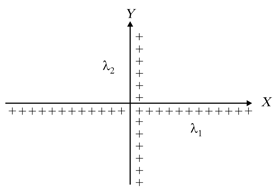Three point charges and are placed at the vertices of an isosceles right angled triangle as shown in figure. The magnitude of electric field intensity produced by these charges at the middle point of hypotenuse is



Important Questions on Electric Charges and Fields
On a non-conducting ring of radius and charges are uniformly distributed in two halves as shown in figure. The electric field intensity on its axis at a distance from its centre is given by , then
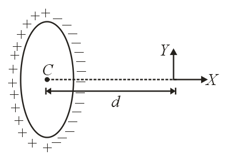
Two point charges and are placed on -axis. Considering electric field is positive if directed in positive -direction. Variation of electric field strength with distance is shown in figure for lying between the charges. Then the nature of charges and are respectively
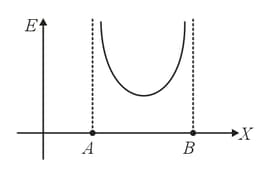
A non-conducting square plate of side length is uniformly charged with charge and a point charge is placed at perpendicular distance as shown in figure. The electric force on the point charge due to plate is
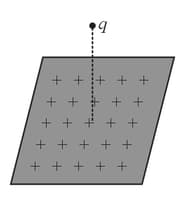
An annular disc of inner radius and outer radius has uniformly distributed charge Electric field strength at point is
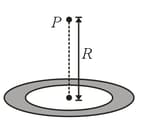
A small electric dipole of dipole moment is placed perpendicular to an infinitely long wire of linear charge density The centre of dipole is at a distance from the wire as shown. The electric force on the dipole is

A dielectric slab is placed in uniform electric field as shown in figure. Then
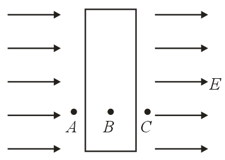
A hemisphere of radius as shown in figure is uniformly charged with a surface charge density The electric field at the centre is
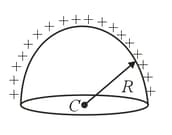
Two non-conducting infinitely long straight wires with uniform linear charge densities and are arranged along and -axis respectively. Their point of intersection is at origin. One of the field lines due to these wires in plane is a straight line passing through the origin. The angle made by this line with -axis is
